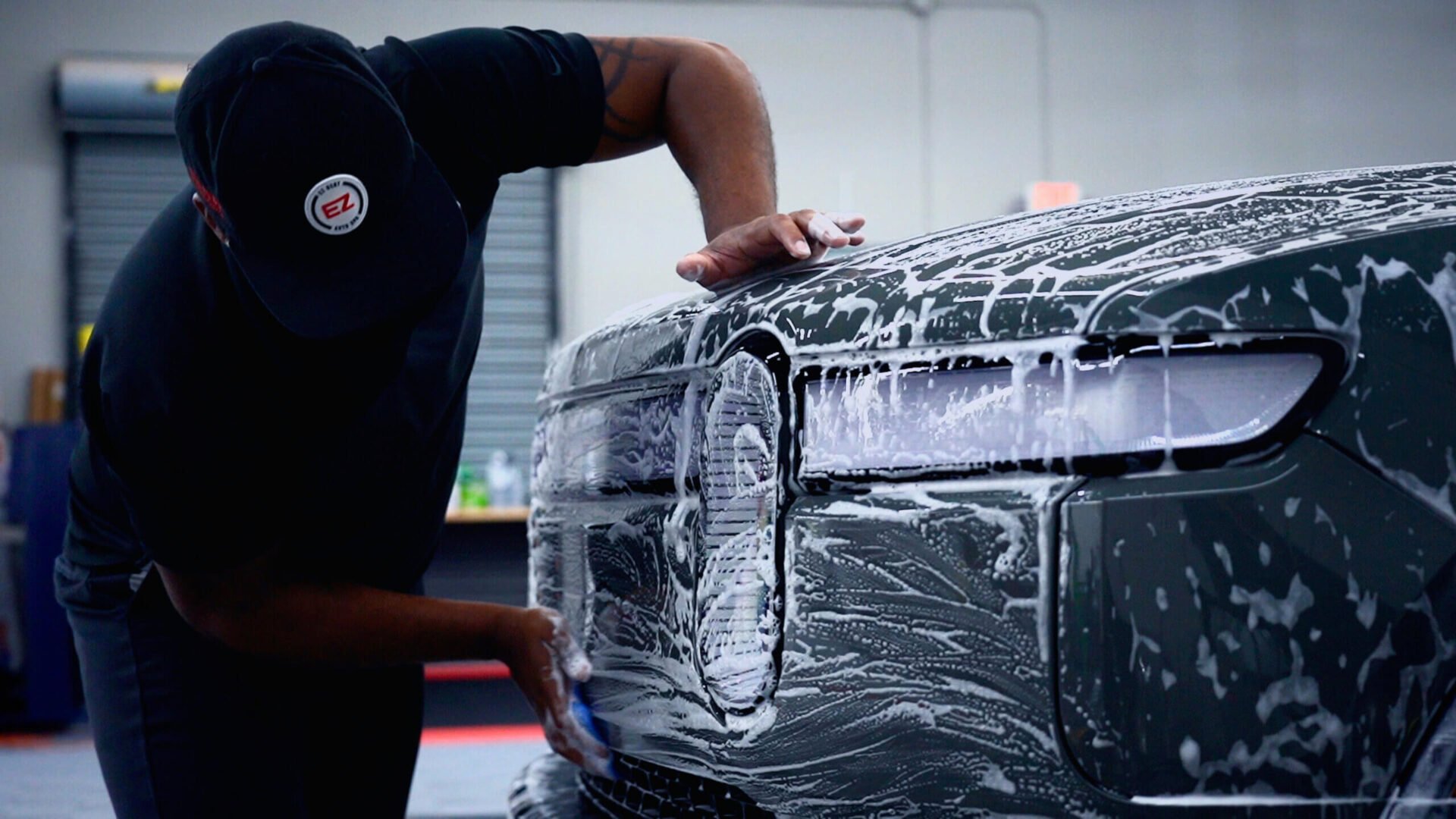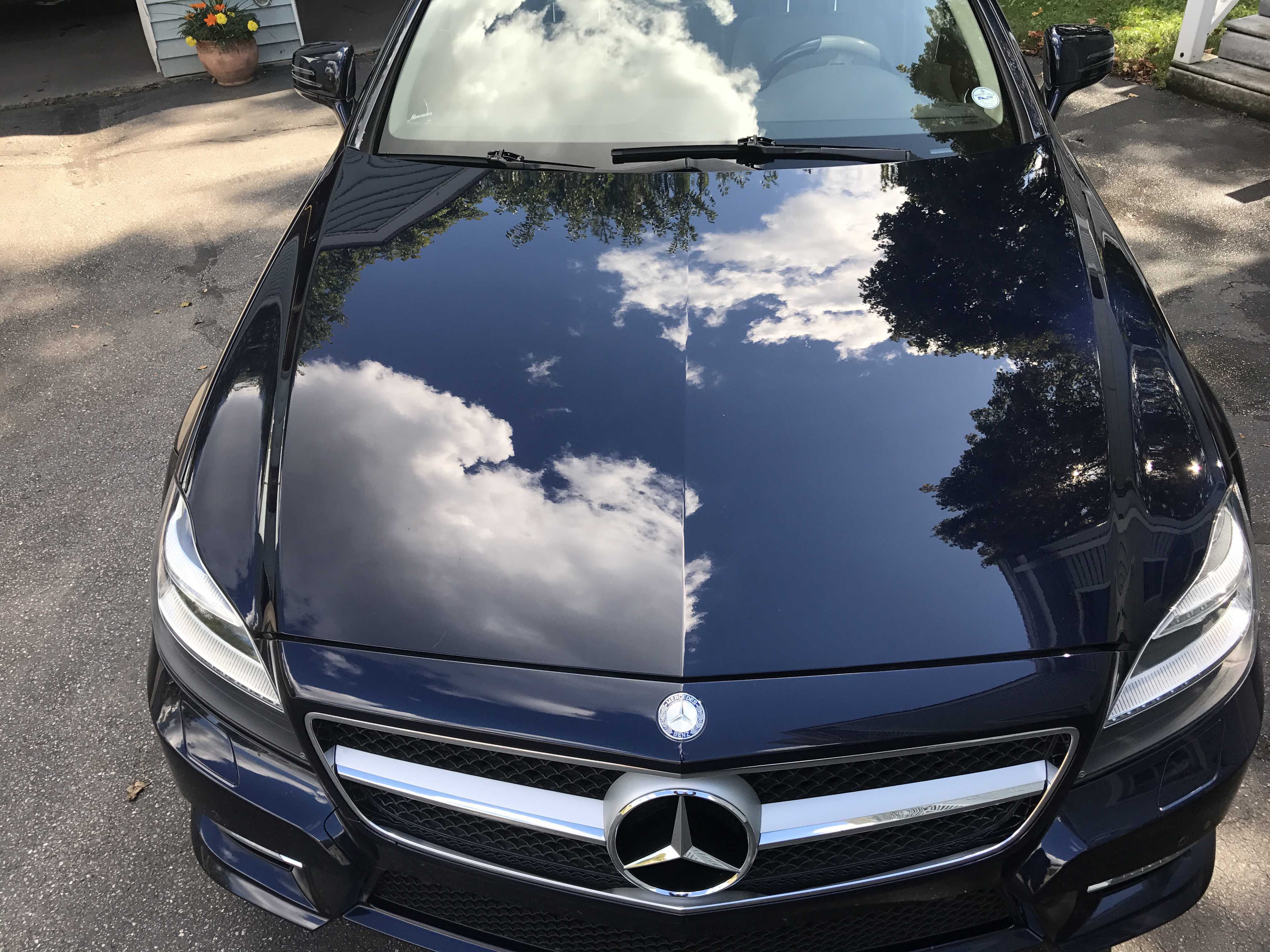Drive a Spotless Car Thanks to Auto Protection Studio for Exceptional Results
The Value of Ceramic Finish: Shielding Your Auto's Exterior With Precision
In an era where preserving the visual and functional integrity of your vehicle is extremely important, ceramic covering emerges as a crucial option. With its unique bonding homes, ceramic finishing supplies a degree of defense that far goes beyond traditional waxing techniques.

Advantages of Ceramic Coating
When it involves preserving a vehicle's aesthetic charm, ceramic layer uses substantial advantages. This advanced safety layer gives a sturdy shield against ecological pollutants, consisting of dirt, grime, and unsafe UV rays. By creating a semi-permanent bond with the vehicle's paint, ceramic finishes successfully stop oxidation and fading, ensuring that the cars and truck maintains a glossy, showroom-like surface for an extended period. This not just improves the lorry's visual allure however likewise adds to its long-lasting value.
Along with its safety top qualities, ceramic coating offers remarkable hydrophobic buildings, causing water and various other liquids to grain off easily. This feature simplifies the cleaning procedure, as dust and debris are much less most likely to abide by the surface, reducing the regularity and initiative required for upkeep. Furthermore, the layer's resistance to chemical stains from acidic pollutants like bird droppings and tree sap is an additional notable benefit, lessening prospective paint damages.
Ceramic layers likewise enhance scratch resistance, supplying a layer that can take in minor abrasions and swirl marks. This feature is particularly beneficial in preserving a pristine surface, minimizing the possibility of noticeable imperfections and protecting the integrity of the cars and truck's paintwork over time.
Just How Ceramic Finishing Works
Recognizing the technicians behind ceramic finish exposes its efficacy as a protective service for automobiles. Ceramic finishings are basically liquid polymer applications that chemically bond with an auto's factory paint, creating a safety layer. This layer acts as an obstacle against ecological contaminants such as dirt, ultraviolet, and crud rays, which can deteriorate an auto's exterior gradually. The essential part in ceramic coating is silicon dioxide (SiO2), which stems from quartz crystals and is known for its remarkable hardness and resilience.
Application of ceramic finishing involves a meticulous procedure. This guard boosts the car's gloss and hydrophobic residential properties, assisting in much easier cleansing by triggering water and pollutants to grain and slide off easily - Auto Protection Studio.
Additionally, the finish's molecular framework supplies resistance to small scrapes and chemical spots. Unlike waxes or sealants that rest on top of the paint, ceramic finishings integrate with the surface area, supplying resilient defense. This assimilation is essential to its effectiveness, ensuring the lorry's finish continues to be excellent for many years.
Comparing Ceramic Layer to Alternatives

Contrastingly, sealers, although more resistant than waxes, still disappoint the robust security provided by ceramic coverings. Sealants can usually last for as much as a year, providing an artificial guard versus certain components. Nevertheless, they do not have the exceptional hydrophobic buildings and UV security that ceramic coatings provide.
Additionally, ceramic finishes provide boosted scratch resistance, which neither waxes nor sealers can efficiently match. This is specifically useful in keeping an automobile's immaculate look. Additionally, ceramic finishings streamline maintenance efforts by reducing the adherence of dirt and crud, thereby helping with less complicated this page cleaning. In summary, while standard waxes and sealants use standard security, ceramic finishes offer an extensive, long-lasting option that significantly improves and protects the automobile's outside coating.
Application Process Explained
Applying ceramic coating to a vehicle calls for a precise process to make certain optimum outcomes and resilience. The first action includes thoroughly cleaning the car's surface to remove dust, oil, and Read More Here previous waxes. This is important for guaranteeing the finish sticks correctly. A pH-neutral hair shampoo and a clay bar therapy are frequently utilized to achieve a pristine surface area. Once cleaned, the vehicle is dried out and brightened to eliminate any flaws, as any existing swirls or scrapes can end up being more obvious after the finish is applied.
Following surface preparation, the application of the ceramic finish starts. Using an applicator pad, the ceramic finish is applied in small sections to guarantee also insurance coverage.
After application, the finish calls for a specific curing duration, throughout which the automobile needs to be shielded from water and contaminants. This treating process can vary depending on the product but normally ranges from 24 to 48 hours. Ultimately, this comprehensive process is pivotal in achieving a glossy and resilient finish.

Maintenance Tips for Durability
To preserve the durability of a ceramic finishing, adherence to a regimented maintenance regimen is essential. Avoid automated auto cleans, as their extreme brushes can compromise the finishing's stability.
Post-wash, drying the vehicle with a tidy microfiber towel avoids water areas that may degrade the layer with time. In addition, apply a ceramic layer booster every couple of months. These boosters strengthen the hydrophobic residential properties and enhance the covering's protective capabilities, guaranteeing it stays efficient versus contaminants.
Keep in mind that parking areas play an important function in maintenance. Whenever feasible, park in shaded areas to minimize UV direct exposure, which can gradually damage the layer. For long-lasting storage space, think about making use of an auto cover for added defense against ecological aspects.
Conclusion
Finally, ceramic coating acts as an important protective layer for automobile outsides, offering resilient protection against ecological factors such as gunk, uv, and dust rays. By creating a semi-permanent bond with the paint, it improves visual allure while preserving the cars and truck's value. Its hydrophobic homes promote easier maintenance, distinguishing it from alternate safety techniques. Comprehending the application procedure and sticking to upkeep recommendations are necessary for making the most of the durability and efficiency of ceramic finish.
When it comes to preserving an automobile's visual allure, ceramic finish offers considerable benefits. By forming a semi-permanent bond with the automobile's paint, ceramic coverings properly protect against oxidation and fading, ensuring that the car keeps a shiny, showroom-like finish for an extended duration. Ceramic layers are basically liquid polymer applications that chemically bond with a car's manufacturing facility paint, creating a safety layer. In summary, while typical waxes and sealers offer fundamental protection, ceramic coverings offer a detailed, long-term remedy that significantly boosts and preserves the lorry's outside finish.
In final thought, ceramic coating serves as a vital safety layer for vehicle exteriors, supplying lasting defense versus environmental aspects such as uv, dirt, and crud rays. - Auto Protection Studio